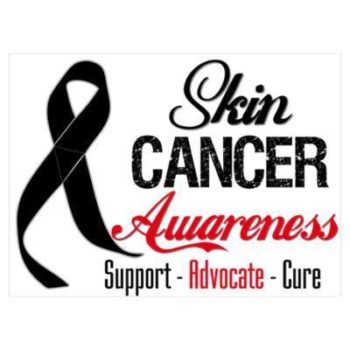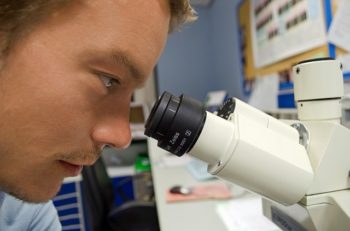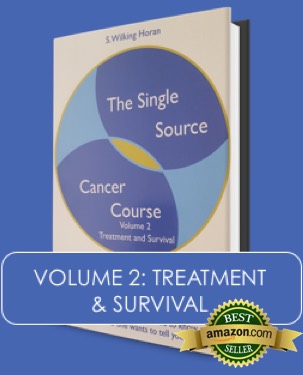 WRAPPING UP SKIN CANCER AWARENESS MONTH
WRAPPING UP SKIN CANCER AWARENESS MONTH
Hi Everyone and welcome to another WELLNESS WEDNESDAY. As we near the end of SKIN CANCER AWARENESS MONTH, as promised, I’m adding one more blog to close the month.
If you remember, I was diagnosed with another skin cancer last month. Now this one was a squamous cell cancer right on top of my head. This type of skin cancer is not as serious as melanoma, but it still requires surgery. So, I was scheduled for a MOHs procedure, which I underwent two weeks ago.
This week I’m happy to report that my surgery went just fine and my head is now cancer-free once again.
And now that my Mohs is in the past, let me explain the entire procedure to you from my first-hand account.
First, a Mohs is designed to be a tissue-sparing surgery – one that only removes damaged tissue and not healthy tissue. This means that the surgery is conducted in stages, where the surgeon only removes a small amount of tissue at a time.
When you report for your Mohs, you will be guided to a surgical room where you sit or lie down on a surgical table depending upon the location of the cancer on your body. You’ll answer a few medical questions, consult with a nurse or medical assistant, have your temperature and other vitals taken and be made very comfortable.
When your surgeon arrives, she or he will administer a local anesthesia with a needle and syringe. In my case, the top of my head was anesthetized with about three or four shots. It’s good to know, however, that the only one you really feel is the first one as the medication takes effect almost immediately.
Now, the site of the skin cancer is mapped out on a computer so the surgeon knows exactly where to begin removing the damaged tissue. With small cuts and a “scraping” movement, the surgeon will begin removing tissue right in the middle of the cancer site and then stop.
At this point, the patient is escorted to another waiting room while the removed tissue is sent to pathology. In the pathology lab, the tissue is inspected thoroughly – and this is what the technicians are looking for.
Let’s say, for example, that a circular patch of tissue has been removed from the skin. The lab will check to see if all the cancer cells are within that circle. If there are cancer cells on the edge of the circle, it means that the margins are not quite clear. This means there may be more cancer on the outside of the circle that still needs to be removed.
If so, the patient will go back into surgery and the surgeon will take just a little bit more of the tissue around the cancer site. Then the patient will go to the waiting room, the removed tissue will go to pathology for inspection and the margins will be checked once again.
Now if there is no indication of cancer around the perimeter of the tissue sample, we know that the margins are clear and no additional tissue needs to be removed.
In fact, this is what happened to me. The first stage of tissue removal did not quite get all the cancer. So, my surgeon made another pass and took a little more tissue around one edge of the cancer site. And fortunately, this second pass removed all the damaged tissue, revealed clear margins and left my head cancer-free. Whew!
By the way, two or three passes during a Mohs procedure is typical. Sometimes, because the surgeon moves very carefully and cautiously, removing all the cancer can take four or five passes. The important thing to remember is that no more tissue than that which is absolutely necessary will be removed.
And now I am post-op! Of course, the surgery leaves a wound that needs to be cared for. It requires a constant application of petroleum jelly or Aquaphor, which are basically the same thing. And, it needs to be kept clean with a little hydrogen peroxide or soap, depending upon your surgeon’s instructions.
Like me, you’ll be wearing a bandage on the site for a few weeks. It’s also good to know that as the wound heals, it will shrink in size. And for those of us who lose a little hair in the process, that too will grow back in time.
The important thing is that this amazing procedure has the ability to safely remove skin cancer while leaving the surrounding healthy tissue intact. And that is good news indeed!
So, I’m wrapping up another Skin Cancer Awareness Month with another skin cancer — and a happy ending. Remember, anyone can get skin cancer anywhere on the body. The key is to catch it early when it can be completely stopped and treated successfully.
 To that end, please:
To that end, please:
- See your dermatologist once a year for a full body check.
- Pay attention to your own body and watch for changes in your skin.
- Make note of bumps, lumps, redness and itching on your skin.
- Keep an eye on moles and birthmarks for any change in appearance.
These things may indicate something more than just an irritation, dry skin or varying pigmentation. Always remember:
BE PREPARED. BE INFORMED. BE SAFE.
Summer is right around the corner. Make sure you practice SUN-SENSE this year and don’t forget the hat, the sunglasses and the sunscreen.
On that note, thanks again everyone for joining me. Until next time, stay in GOOD HEALTH and . . .
TAKE THE COURSE AND TAKE CHARGE!



Leave a Comment